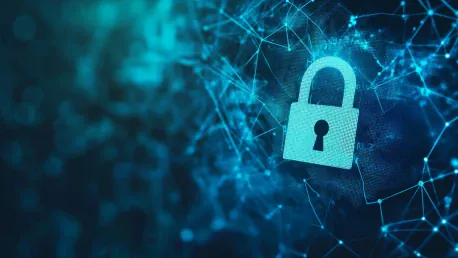In an increasingly digital world, cybersecurity threats pose significant risks to both national security and private sector operations. This article delves into notable cybercriminal activities, government policies, and measures to combat these evolving dangers.
Rising Cybercrime Activities
High-Profile Ticketing Platform Breach
Cybercriminals exploited a backdoor within StubHub, leading to the theft of thousands of high-demand tickets for events, including Taylor Swift’s Eras Tour. Perpetrators in Jamaica, Queens, accessed nearly 1,000 tickets through a contractor and resold them on StubHub, netting approximately $635,000. This incident underscores the vulnerabilities within digital ticketing platforms, which can be targeted for significant financial gain. The criminals gained access to StubHub’s secure system using a third-party contractor, Sutherland, sending URLs of pre-sold tickets to an accomplice.
The scheme extended beyond just concerts, implicating events like Ed Sheeran concerts, NBA games, and the US Open. This breach highlights the ability of cybercriminals to exploit digital platforms for substantial profits. StubHub, along with other ticketing services, faced increased scrutiny and pressure to enhance their cybersecurity measures to prevent future breaches. The criminals’ ability to seamlessly integrate stolen tickets back into StubHub’s marketplace demonstrates the sophisticated nature of these cyberattacks, posing challenges for both detection and prevention.
Compromised Android Devices
Human Security uncovered mass ad fraud and scamming operations, labeled Badbox 2.0, involving low-cost Android devices from China. These compromised gadgets have exacerbated security risks, merging hardware vulnerabilities with advanced fraud techniques. Badbox 2.0 represents an upgraded effort targeting similar devices from previous operations, showcasing the persistence and adaptability of cyber threats originating from hardware exploitation. Particularly alarming is the scale of this operation, with a vast number of low-cost Android devices being manipulated.
The combination of hardware vulnerabilities and sophisticated fraud mechanisms creates a challenging environment for cybersecurity professionals. Exploiting the inherent weaknesses in these low-cost devices, the perpetrators can deploy malware to conduct large-scale ad fraud, costing advertisers significant revenue. The persistent threat landscape necessitates continuous advancements in both hardware security standards and anti-fraud technologies. Users of these compromised devices are not only at risk of financial loss but also at heightened risk for data breaches and identity theft, calling for increased vigilance and protective measures.
Government Policies and Reforms
Military Cybersecurity Adjustments
The Department of Defense is considering workforce cutbacks for tackling weapons of mass destruction amidst broader government reforms. This decision aligns with efforts to streamline operations and refocus agendas under the Trump administration. The proposed cutbacks have stirred concerns among experts regarding the capability to address cybersecurity threats and the proliferation of dangerous weapons. Reducing the workforce tasked with combating such critical issues may expose vulnerabilities in national security.
These adjustments are part of a larger governmental effort to enhance the efficiency of military and defense operations. However, the realignment of resources necessitates a delicate balance to ensure that cybersecurity defenses remain robust. The evolving nature of cyber threats, particularly in the realm of chemical, biological, and nuclear weapons, demands continual adaptation and readiness. The necessity for a skilled and adequately staffed cybersecurity workforce within the Department of Defense remains a critical component of maintaining national security.
AI Tools in Government
The US Army’s AI tool, “CamoGPT,” initially aimed at productivity, is being redirected to review policies on diversity and inclusivity. This shift reflects the administration’s move towards evaluating and enhancing social policies within defense operations. Originally designed to improve operational readiness, “CamoGPT” is now tasked with analyzing diversity, equity, inclusion, and accessibility (DEIA) policies. This strategic redirection illustrates the use of advanced technologies in bolstering social policy initiatives.
The implementation of “CamoGPT” in reviewing DEIA policies marks a significant departure from its initial purpose, highlighting the adaptability of AI tools in addressing diverse challenges. The administration’s emphasis on social inclusivity within defense operations underscores the importance of equal representation and equitable treatment. By leveraging AI technologies, the government aims to foster an environment that values diversity and inclusion, ultimately enhancing the overall effectiveness and morale of the military workforce. This innovative approach demonstrates the potential of AI tools to contribute to broader societal goals.
Digital Payment Systems and Regulation
Illicit Financial Transactions
Huione Guarantee, a Cambodian gray market platform, faces scrutiny for facilitating over $24 billion in scam-related transactions. Authorities suspended Huione Pay’s financial license due to regulatory non-compliance, highlighting the need for stringent oversight. The suspension of Huione Pay underscores the critical importance of regulatory frameworks in curbing illicit financial activities. As a major player in enabling transactions tied to scams and frauds, Huione Pay’s operations have drawn attention from international regulatory bodies.
Experts from the United Nations Office on Drugs and Crime and crypto tracing firm Elliptic have linked Huione Pay to extensive cyberscamming operations. The platform’s involvement in facilitating such substantial illicit transactions emphasizes the need for rigorous regulatory measures. The suspension serves as a warning to other financial entities engaged in similar activities, highlighting the consequences of non-compliance. By targeting gray market platforms, authorities aim to disrupt the financial infrastructure supporting widespread scams, thereby reducing the prevalence of cybercrime.
Cryptocurrency Exchange Takedowns
International collaboration led to the disruption of Garantex, a notorious Russian cryptocurrency exchange involved in money laundering. Freezing over $26 million in assets, this action underscores global efforts to counteract illicit financial networks. Garantex, known for enabling criminal transactions including those by transnational and terrorist organizations, has processed at least $96 billion in cryptocurrency exchanges since its inception. The coordinated effort by the US Department of Justice, Germany, and Finland exemplifies the importance of international cooperation in tackling cybercrime.
The takedown of Garantex highlights the effectiveness of collaborative law enforcement actions in disrupting major criminal operations. By freezing significant assets and dismantling the exchange’s digital infrastructure, authorities have sent a strong message to other illicit entities. This operation illustrates the critical need for continued global partnerships to combat the sophisticated nature of cybercriminal activities. The impact of dismantling a key player in the cryptocurrency space serves as a deterrent for other platforms engaging in money laundering and illegal transactions.
Emerging Impersonation Threats
Corporate Executive Extortion
The FBI has highlighted a spate of scams involving the impersonation of the ransomware group BianLian. Scammers falsely claim association with the gang and demand Bitcoin ransoms from corporate executives, exploiting fear for financial gain. This new breed of cyber extortion leverages the notoriety of well-known criminal organizations, creating a heightened sense of urgency and panic among victims. The scammers’ ability to instill fear without actual network breaches showcases their psychological manipulation tactics.
By pretending to be part of an infamous ransomware gang, these criminals capitalize on the existing fear and reputational damage associated with such groups. The requirement of ransom payments in Bitcoin adds another layer of difficulty for authorities to trace and recover funds. This tactic highlights the non-traditional methods cybercriminals are using to extort money from businesses, emphasizing the necessity for heightened awareness and preparedness among corporate executives. Effective response strategies and educational efforts are essential in mitigating the impact of these sophisticated scams.
The Threat of BianLian
BianLian, presumed to have Russian ties, has allegedly targeted US critical infrastructure since mid-2022. The group’s notoriety is being leveraged by scammers to authenticate extortion attempts, intensifying cybersecurity challenges for organizations. BianLian’s involvement in targeting critical infrastructure raises concerns about the vulnerabilities within essential services and the potential for significant disruption. The group’s reputation as a formidable ransomware operator is being exploited by other fraudsters to lend credibility to their threats.
Organizations are left grappling with the dual threat of actual cyberattacks and fraudulent extortion attempts. The psychological and financial toll on businesses dealing with such threats underscores the need for robust cybersecurity protocols and rapid response mechanisms. Strengthening cybersecurity defenses, conducting regular threat assessments, and fostering a culture of vigilance within organizations are critical steps in addressing these challenges. Collaboration with law enforcement and cybersecurity experts can provide valuable support in navigating the complexities of modern cyber threats.
International Cooperation and Cybersecurity Measures
Strengthening Legal Frameworks
The need for robust legal frameworks and proactive measures is critical in responding to sophisticated cyber threats. Governments and private entities must collaborate to address vulnerabilities and enhance digital defenses. With cybercriminals continuously evolving their tactics, legal systems must keep pace with these advancements to ensure effective deterrence and prosecution. Developing comprehensive cybersecurity policies and regulations is essential in establishing a secure digital environment.
Proactive measures, including regular security audits, threat intelligence sharing, and incident response planning, are fundamental components of a cohesive cybersecurity strategy. Public-private partnerships play a pivotal role in fortifying digital infrastructures against cyber threats. By combining resources and expertise, stakeholders can more effectively combat the complexities of cybercrime. Transparent communication channels and coordinated efforts enhance the ability to detect, prevent, and respond to cyber incidents, ultimately strengthening overall cybersecurity resilience.
Cybersecurity Community Efforts
In our increasingly digital world, cybersecurity threats pose substantial risks to both national security and private sector organizations. These dangers range from sophisticated hacking attempts to widespread data breaches, all of which can have devastating consequences. This article explores significant cybercriminal activities, shedding light on the tactics used by attackers to infiltrate networks and steal sensitive information. Additionally, we examine government policies designed to address these issues, including legislative actions and international collaborations aimed at enhancing cybersecurity measures.
Efforts to protect against cyber threats are continually evolving, driven by the need to stay ahead of increasingly complex and persistent attacks. Among these efforts are advanced defensive technologies and innovative strategies for identifying and mitigating risks. Collaboration between the public and private sectors is essential for achieving a robust cybersecurity posture. By fostering partnerships and sharing intelligence, we can build stronger defenses against cyber adversaries. This article provides an in-depth look at the current landscape, highlighting the importance of proactive measures to safeguard against ever-evolving digital threats.









